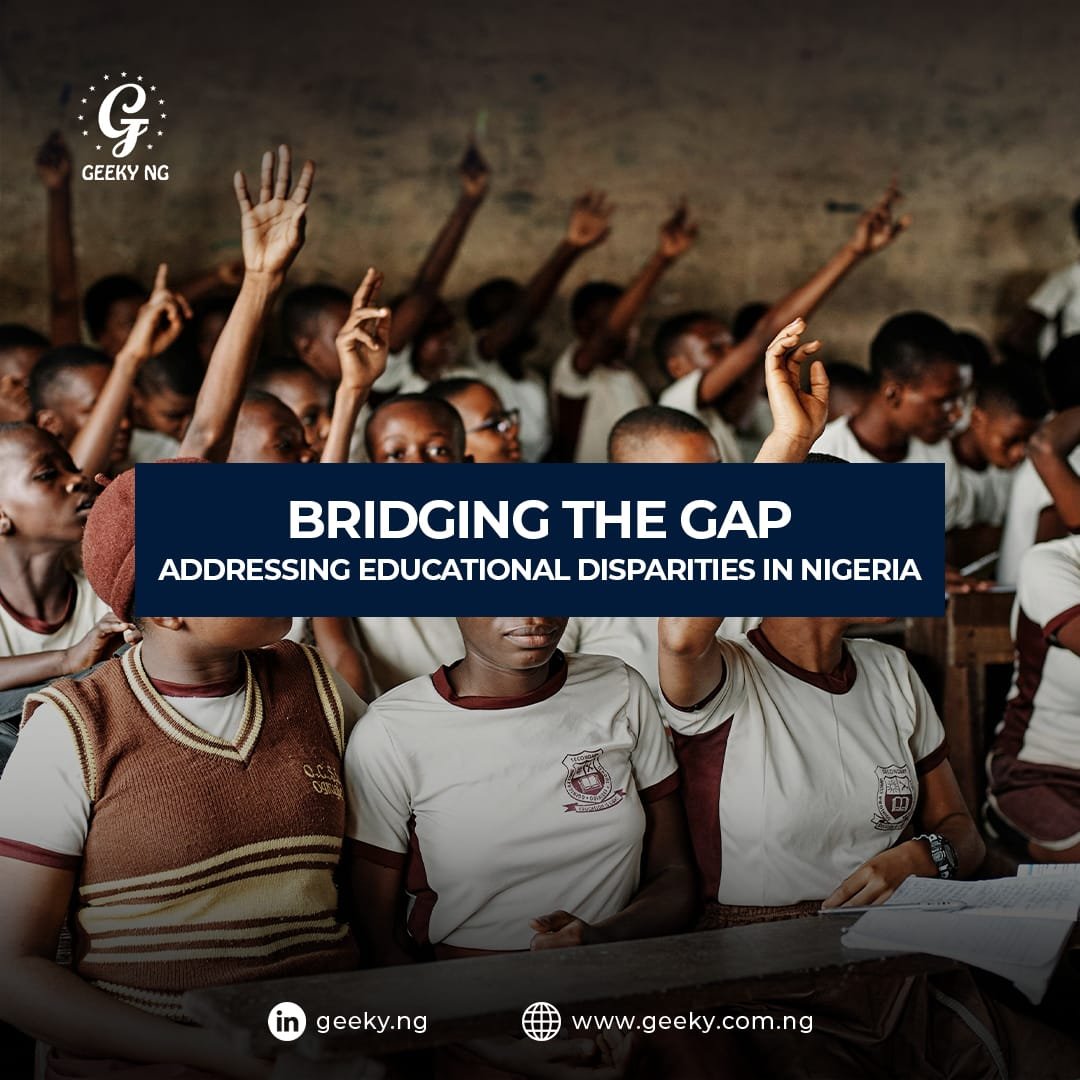Today, many children don’t have the opportunity to finish school in Nigeria, mainly due to educational disparities. This reality shows the big education gap that we face.
Education shapes our future. Without it, there won’t be technology, job opportunities, and social justice. Through the aid of digital technology, we can use our voices and tools to help bridge this gap and reduce the disparities.
This article will show the educational disparities and challenges faced in Nigeria and how we can work together to create a brighter future for our youth.
Two big facts that show the level of educational disparities faced in Nigeria are that only about 60% of children complete primary school and approximately 50% of adults are literate.
These cases are even worse in regions like northern Nigeria.
Common Educational Disparities and Challenges faced in Nigeria
Digital and Technological Barriers
In rural areas of Nigeria, most students don’t have access to computers or the internet.
Without these technologies, students miss out on online resources, digital learning tools, and up-to-date information. This makes it harder for them to learn and stay on the same level with students in more connected areas.
Examples of solutions that’ll be suitable for this problem in our education sector include:
• One Laptop per Child Programme
• Mobile learning apps
• Solar-powered internet hubs
Socio-Economic Factors
Another common challenge in our educational sector is poverty. Many families in Nigeria can’t afford to keep their children in school due to inability to pay their fees and buy learning materials for them, especially in poor areas.
In some cultures, children are expected to work and help support their families instead of going to school. This is common in farming communities and among families struggling to make ends meet.
Gender Disparities
The last challenge that is common in the Nigerian educational sector is the rate of enrollment and completion of school due to gender and cultural barriers.
Boys are more likely to attend and finish school than girls. For example, in some regions, only about 30% of girls complete primary school, while the rate for boys is higher.
In many communities, educating boys is seen as more important than educating girls. This is because early marriage is common for them, as many girls marry before they finish school, which puts an end to their education.
Bridging The Gap
The Nigerian government have been putting effort into addressing these challenges in many ways. They have programmes to provide free primary education and are building more schools and training more teachers. Campaigns are also running to encourage parents to send their children, especially the girl, to school.
These efforts have changed the narrative but more must be done. Many schools still lack basic facilities and trained teachers. More focus is needed on rural areas and ensuring the girl child stays in school. The government should also improve its monitoring to make sure resources reach the schools that need them most.
NGOs and International Organisations Playing a role in Bridging the Gap in our Educational Sector.
They include;
• UNICEF
• Save the Children
• Teach for Nigeria
• UNICEF’s Girls’ Education Project
• Save the Children’s Early Childhood
Education Programmes
There are also tech innovations that support bridging the gap in our educational sector They include:
• e-Learning Platforms: Websites like ULesson offer video lessons and quizzes that students can access online or via their mobile phones.
• Mobile Education Apps: Apps like ScholarX provide study materials and practice tests that students can use even without constant internet access.
• Digital Literacy Programmes: Initiatives like CodeLagos teach young people coding and computer skills, preparing them for future tech jobs.
Conclusion
Nigeria is facing significant educational challenges, from a lack of resources and trained teachers to gender disparities and digital barriers.
While the government and various NGOs are making efforts to address these issues, more work is needed, particularly in our rural areas and for our girls’ education.
Tech innovations and community initiatives are also showing efforts in bridging these gaps.
With our collective involvement, there is hope for progress. We can work together and support these innovative solutions, so that every child in Nigeria has the opportunity to learn, thereby creating a brighter future for her citizens.






